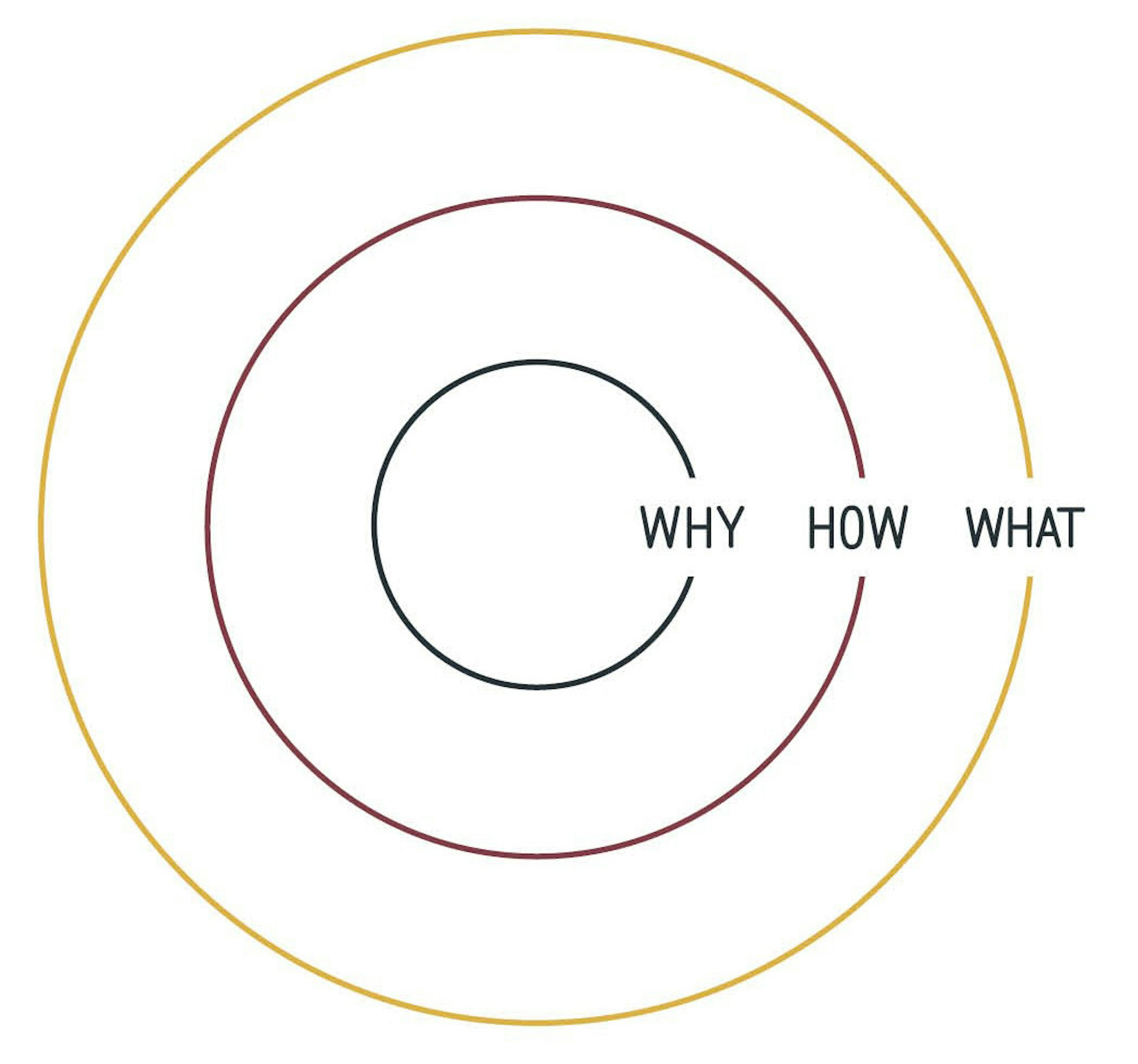This article was originally published in Danish in Dansk HR – Ledelse i udvikling vol. 2, 2017. The text below is a translated version of the article.
7 September 2018
Why do you get up in the morning? Why do you sometimes want to make an extra effort and set the bar a little higher for what you want to achieve – both personally and professionally? Why are you reading this article right now?
If we were to answer with one sentence: Because you can see the purpose of it! And purpose is thus the focus of this article. Research shows1 that if we can find purpose in our work or personal life, we have direct access to one of the strongest motivational factors, making us capable of accomplishing the most amazing things and handling even the most challenging situations.
Viktor E. Frankl2
If you buy into the assumption about purpose being one of the strongest motivational factors, then you might be interested in knowing more about “purpose-driven leadership”. The essence of the approach is to focus on how you as a leader, employee and organisation can create conditions for meaningful work where each individual can see their own purpose. Basically, it means that you work on becoming even better at navigating different opinions and setting the direction in relation to something that has purpose and makes sense to you, employees and the company.
One of the cornerstones of purpose-driven leadership is that as a leader you always start with zooming in on the “why” and communicating this before moving on to “how” and “what”. Simon Sinek3, who is a motivational expert and author of the book “ Start with Why: How Great Leaders Inspire Everyone to Take Action ”, illustrates this point in a very simple way through his idea of the “ Golden Circle”.
The Golden Circle offers insight into why some leaders and organisations have achieved extraordinary results. Common to all, regardless of size and industry, is that they were driven by purpose and focused on purpose both in the way they have acted and communicated. Thus, they have all led their company from the inside of the circle and out (and not vice versa). If you buy into this approach, one of the most important tasks of a leader is to ensure that there is a purpose and that employees are able to mirror their own purpose in their daily work. But what do you do as a leader when you yourself cannot see the purpose?
In both public and private organisations, we are often asked: “What do I do when I’m ordered to do something with no apparent purpose by a superior?” For example, in a public context, leaders sometimes experience that they are ordered to do something with no apparent purpose by politicians, and leaders in the private sector sometimes feel obliged to implement new company strategies that are not always clear to them.
Whatever the situation is and no matter what you are ordered to do as a leader, it is your responsibility to search for its purpose, and if it’s difficult, you simply need to zoom in on the small glimpses of the purpose.
One thing is for certain – nobody gets energy and becomes motivated by hearing their leader say: “Well, I must say that I can’t see the purpose of it all, but we have to do it anyway, because executive management (or politicians) say so. ”Instead, as a leader you should say: “Yes, there are some things that at first glance may seem purposeless, but having explored the conditions more closely, I want to emphasise that there are some elements that may be relevant to us and serve a purpose for our unit. These elements are … Having heard this from me, what makes sense to you, and how might we create some purpose for you in this locked situation?”.
Have you noticed a change in mindset?
Purpose is becoming increasingly important in work contexts, and especially the younger generations of employees between 25 ‑ 40 years old are preoccupied with this theme. They don’t just want to work to make money, work also has to have purpose. Many leaders tell us the same story – they are not sure of how to handle this shift in focus. Earlier, they had conversations about performance (“how” and “what”), and now employees expect conversations that focus more on purpose (“why”). So, instead of talking about: “What is the next step in my career, and how do I achieve this goal?”, employees and leaders talk about: “How do I find purpose in what I’m working with at the moment ?”, “How do we make our products into something more that has a higher purpose than increased turnover and growth?”.
Three things that create purpose
Research shows that you can achieve the following three things by working with purpose at an individual and organisational level4 :
- A higher level of commitment and motivation, because the individual person can see the purpose of their work. In fact, studies show that employees who can see the purpose of their work are up to four times more productive than employees who simply work for the money.
- A better foundation for making the right decisions, since these intuitively can be related to one’s own purpose when the company’s purpose is clear.
- An increased sense of direction, even if there is uncertainty. Thus, it becomes easier to handle changes, because you see the changes as part of a bigger picture.
You may think that it seems like a big task now that leaders have one more item on their to-do lists, namely to support purpose in employees’ lives. And this might be a bit extreme, because at the end of the day it is, of course, an employee’s own responsibility to create purpose in their own life. But a leader can play an important role in the process of making daily work meaningful and thus acquiring the most motivated and engaged employees. And as a direct effect of this, also achieving the best results.
So, how can you as a leader create more purpose for your employees in their daily work? One of the most effective ways you can create purpose among people is through something as simple as a good old-fashioned conversation. But what exactly is a good conversation which can contribute to promoting purpose? And how do we successfully have a good conversation?
We would like to share our approach with you – we call it “REAL conversations”5.
REAL conversations – conversations that create meaning
The concept of REAL conversations is based on a mix of different theories and philosophies on organisation, leadership and psychology. Together they form a mindset and some practical tools that you can use to create meaning in conversations – the tools are not just for leaders, but also for individual employees/teams. REAL stands for: Relate, Engage, Appreciate and Listen.
Only you can decide what creates purpose for you in your leadership style and what is important for you to continue working with. However, we hope that through our focus on purpose-driven leadership and REAL conversations, we can give you inspiration on how to promote purpose in a leadership context – and thereby create motivation, engagement and purpose-driven results.
Relate
If you are truly interested in relating to the person you talk to, you show curiosity, respect, honesty and willingness to share (as well as your own vulnerability). For example: Leader: “I have to make an important decision on how to improve our client’s business service, but before I do that I would like to hear your point of view on this. Hearing your perspective and thoughts will help me assess my own thoughts and ideas and increase the possibility of making the right decision. So, what is important for you to mention in terms of… ?”.
Engage
If you want to engage others through conversation, the best and fastest way to do so is to set the direction for the conversation, so that the topic will be about something that is important to both parties (and not just one of the parties). An example of engaging employees in conversation could be: “Based on the decisions made, which do you feel are most important to delve into ? And how can we make these decisions as important to you in relation to your work tasks and goals as they are to our unit and to me as a leader?”.
Appreciate
If you want to recognise and appreciate others, you need to be able to identify the strengths of the people you are talking with, think positively and focus on what works (rather than on what doesn’t work). A concrete example of appreciating an employee in a conversation could be: “Although there are many unknown factors in the change we are facing, I want to tell you that I have noticed your ability to understand and navigate in this situation despite the ambiguities. In my opinion, this requires a lot of strength. How do you see this yourself?”.
Listen
If you want people to open up and express what is important to them and make them talk about their purpose (“their why”), it’s a prerequisite that you can listen. This means giving the person you are talking to your full attention and listening to the things in the conversation that are important to them.
A concrete example of a leader’s active listening reads as follows: “You mention that you would like to strengthen collaboration with the other units. This makes me feel like you have something in mind in relation to this collaboration, which could be important for us to talk about. Is that right?”.
Only you can decide what creates purpose for you in your leadership style and what is important for you to continue working with. However, we hope that through our focus on purpose-driven leadership and REAL conversations, we can give you inspiration on how to promote purpose in a leadership context – and thereby create motivation, engagement and purpose-driven results.
Notes
1. Dan Ariely, Simon Sinek, Daniel Pink, Karl Weick etc.
2. Viktor Frankl (1959). Man’s Search for Meaning
3. Simon Sinek (2009). Start with Why: How Great Leaders Inspire Everyone to Take Action
4. Edward Deci, Richard Ryan, Rick Maurer, Dan Ariely, Simon Sinek, Daniel Pink, Karl Weick
5. The concept of REAL conversations was developed by Pernille Koch Erichsen, Rikke Sick Børgesen Hoffmann and Tor Nonnegaard, Implement Consulting Group. REAL stands for: Relate, Engage, Appreciate, Listen





